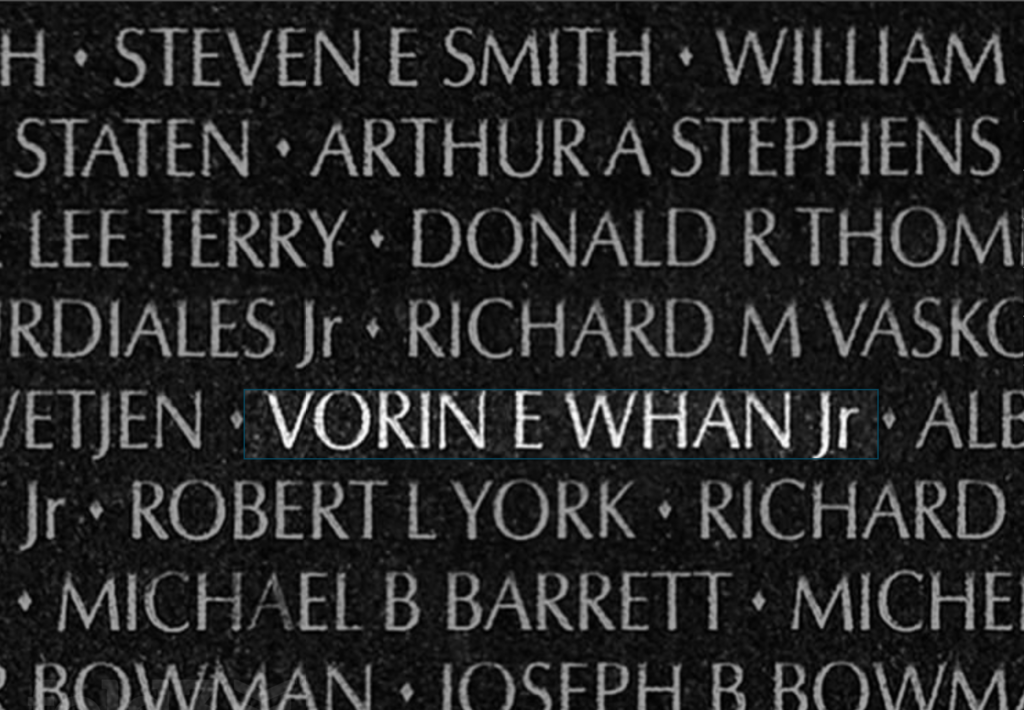The name on the wall below was Juris’s commanding officer, whose unexplained death became the impetus for “Red Flags.” Yet even when speaking to an interviewer from West Point, Juris was able to mourn the American dead without ever losing sight of the toll the war had taken on the North Vietnamese: “Westmoreland had that whole attrition idea: that body count really mattered, that they’d simply run out of bodies if we killed enough of them. So the report card became the bodies. That became its own kind of ridiculousness. If you brought in some guy, even for questioning, and his wife and child, all three of them were Viet Cong on the numbers. The non-coms would twit the intelligence people about the infants being logged as Viet Cong. There was an essential silliness, because as we found out after the fact, they had stopped caring – I don’t mean that the North Vietnamese were lacking in some moral way – but they realized that they’re up against someone with an Air Force that they haven’t got, they’re up against someone with tanks they haven’t got, they’re up against helicopters they don’t have, they don’t even have the boots. They don’t have steel pots on their heads. All they’ve got is themselves, and their bodies. And they would in some way have to compensate for the superiority of their enemy – us – by simply accepting more casualties. They suffered unbelievable casualties. I mean we are, to this day, mourning those 58,000, and some of us will mourn them until we ourselves check out – the 58,000 on our wall – their wall would hold two and a half million. It was just an incomparable sense of loss.”
